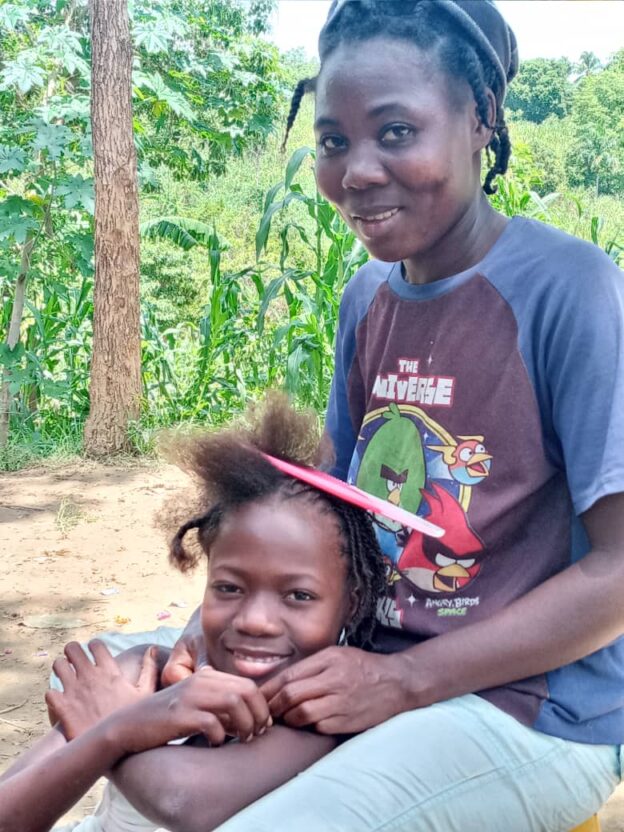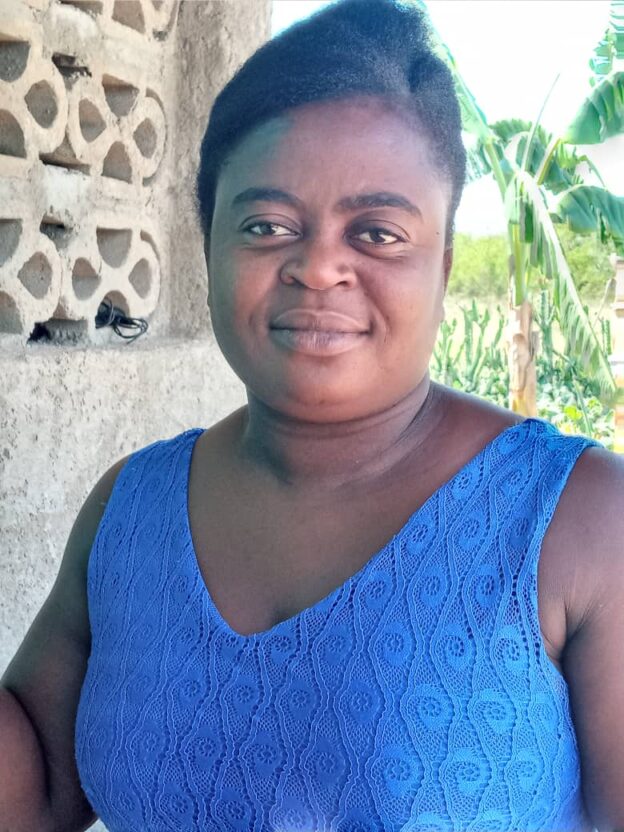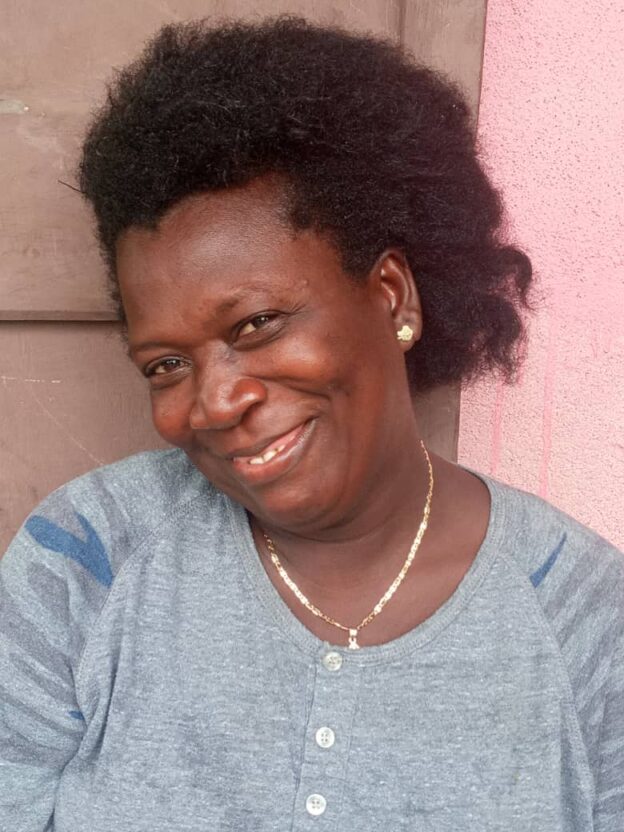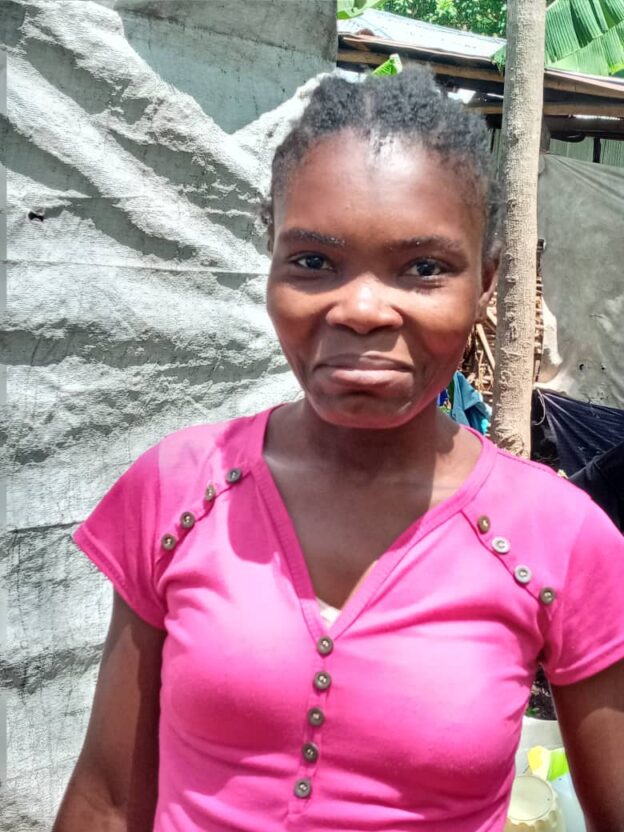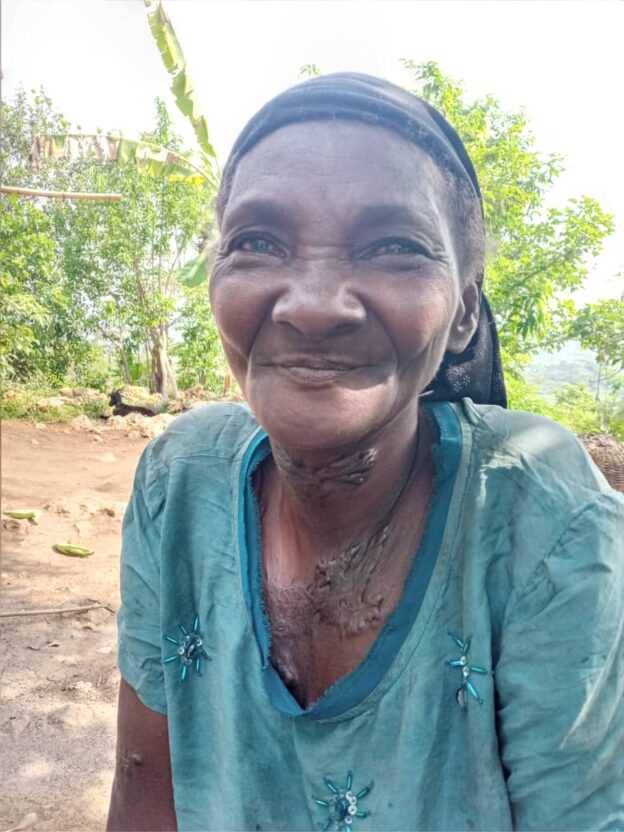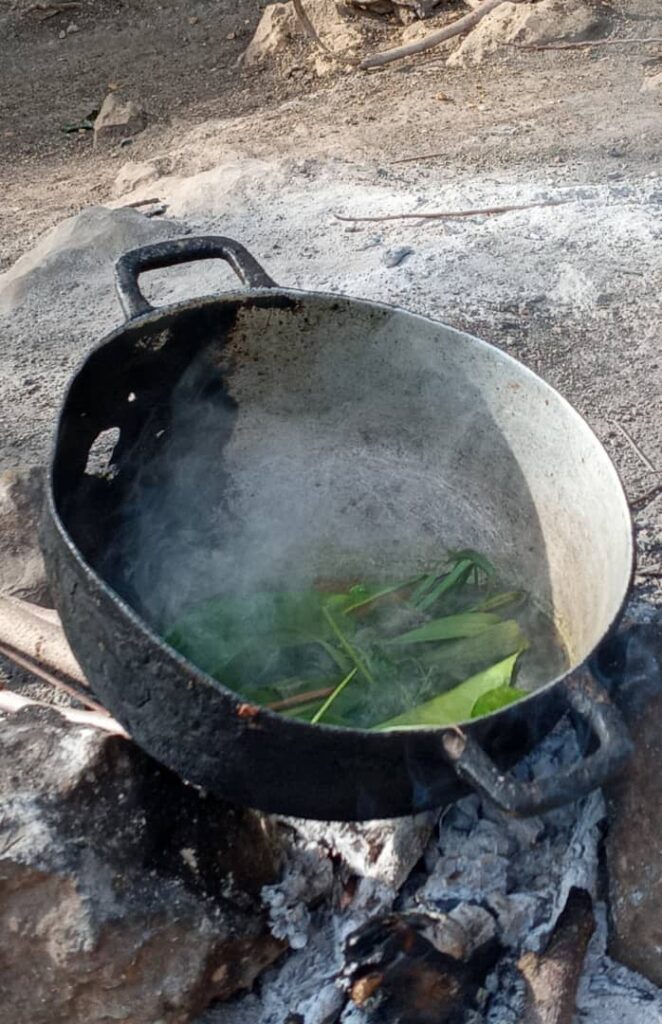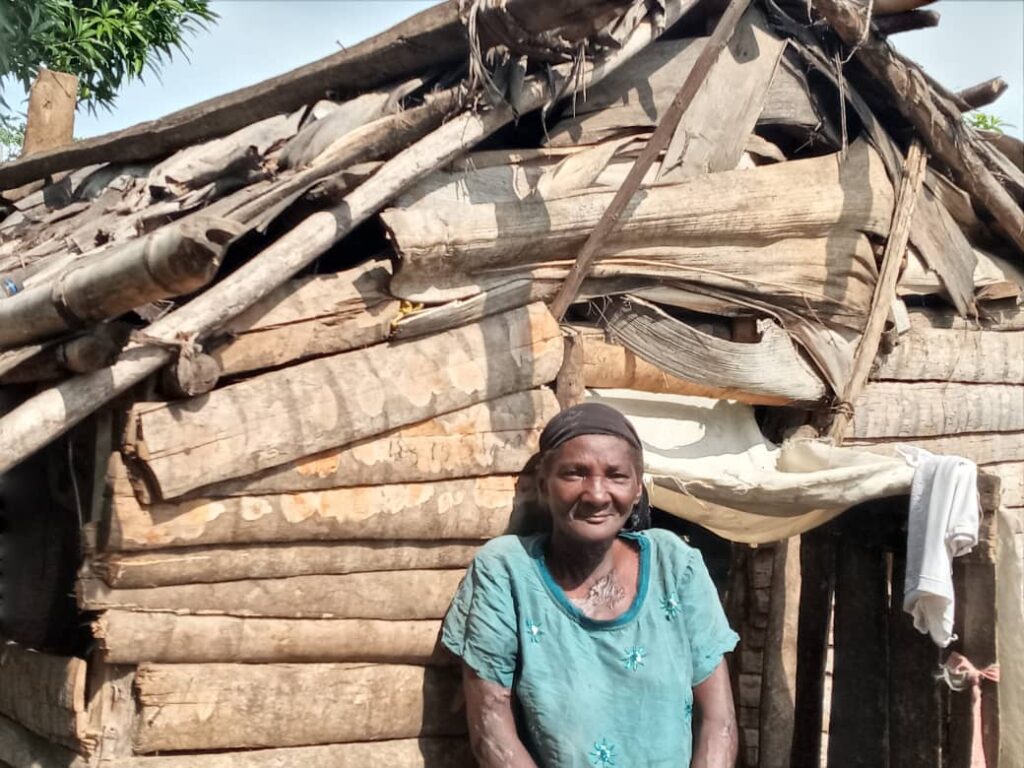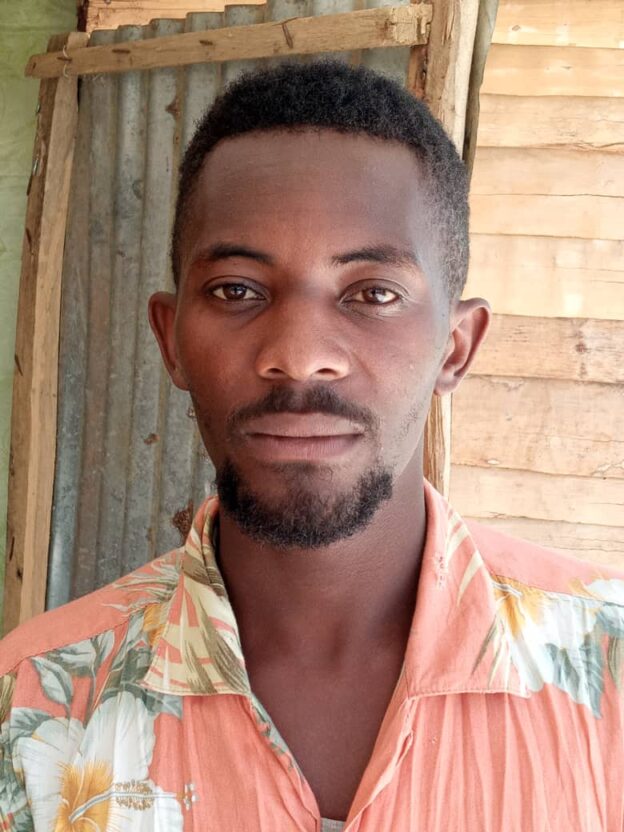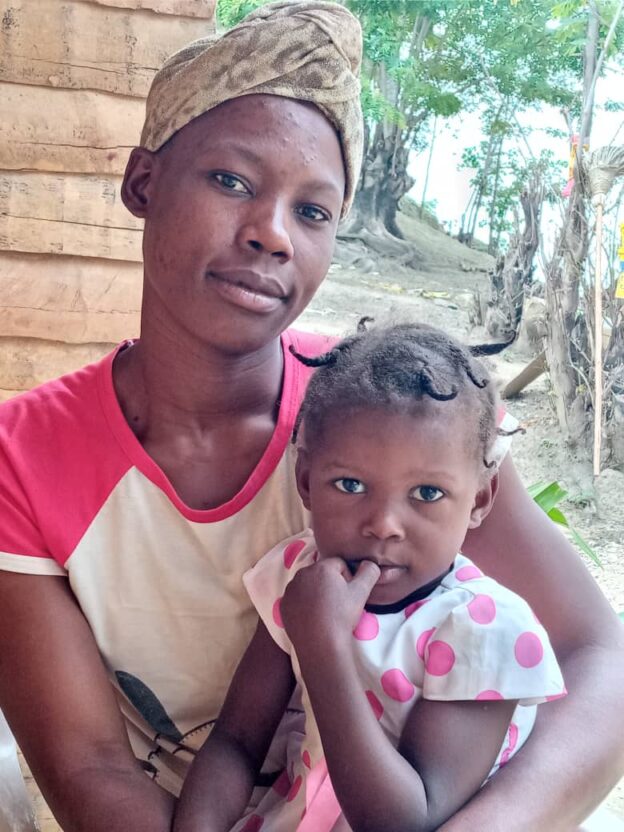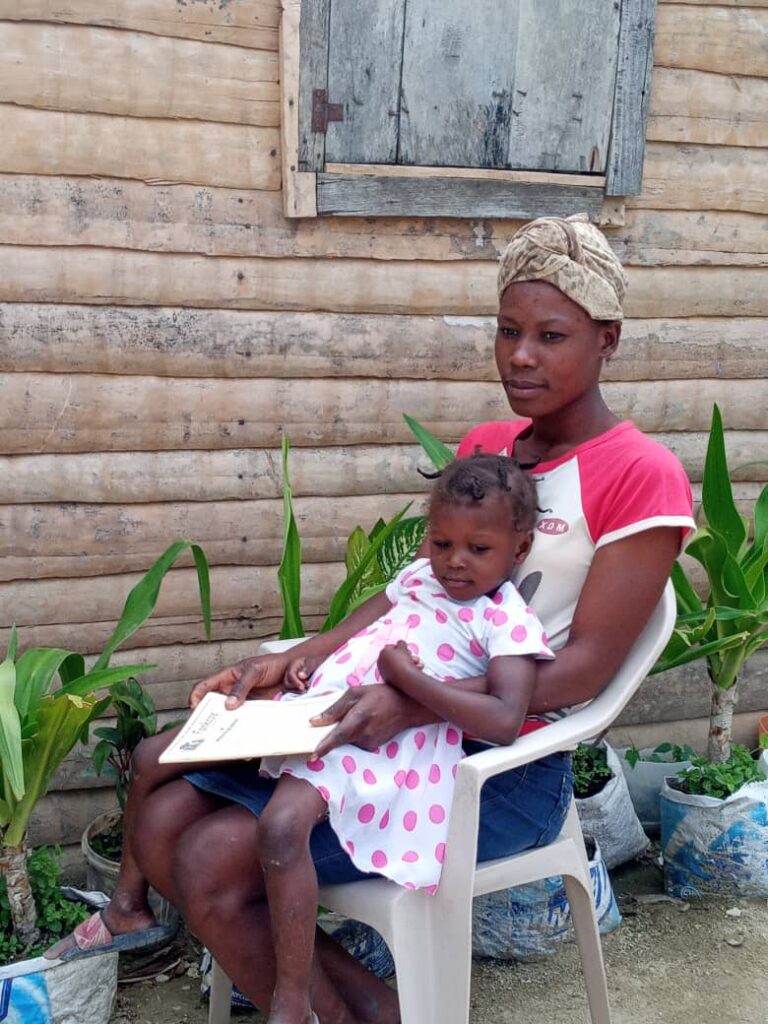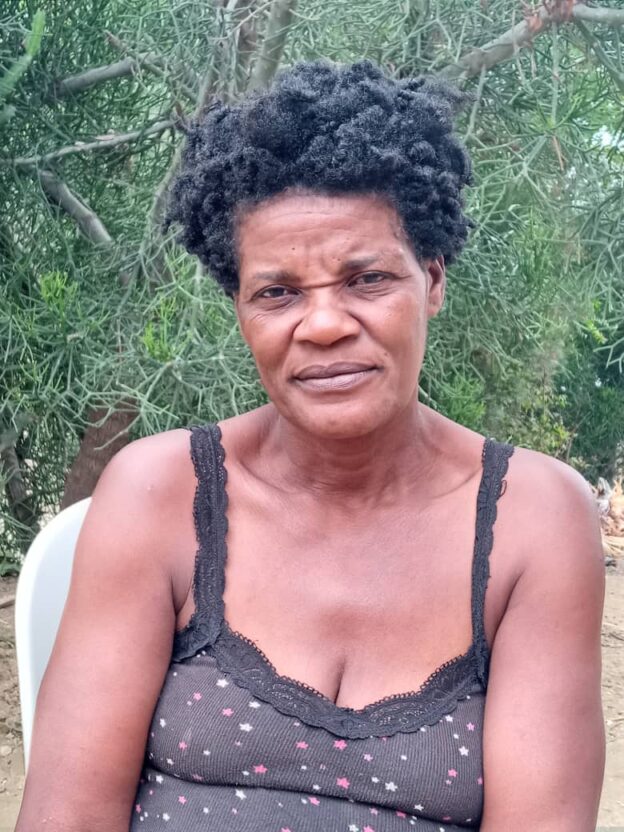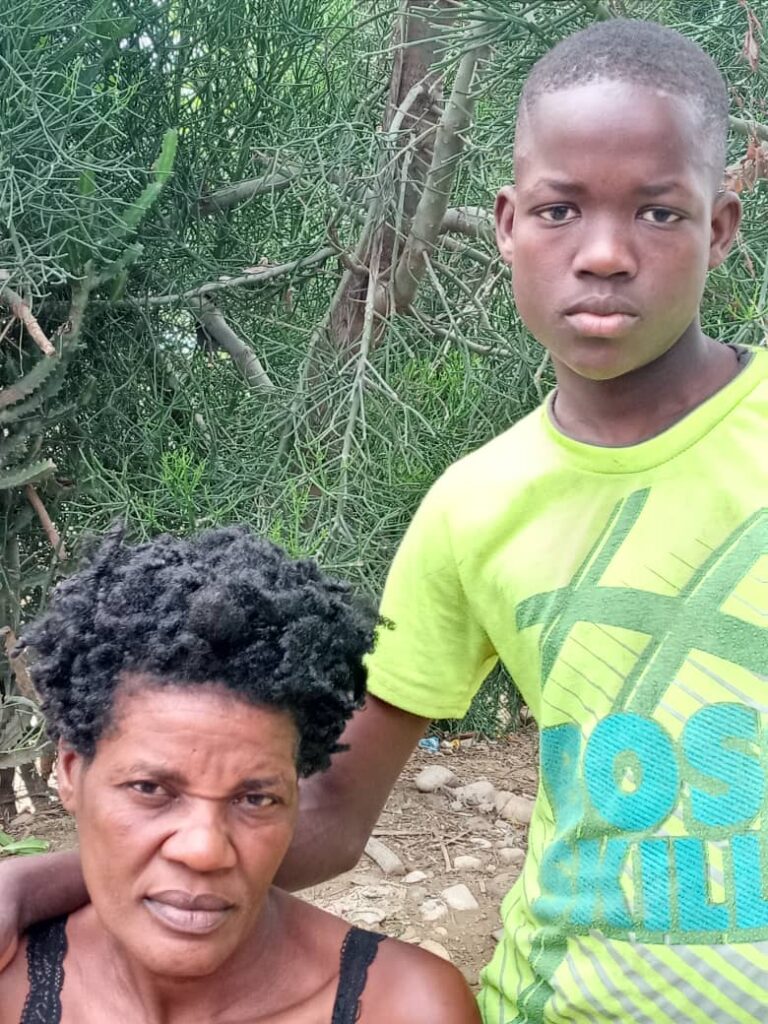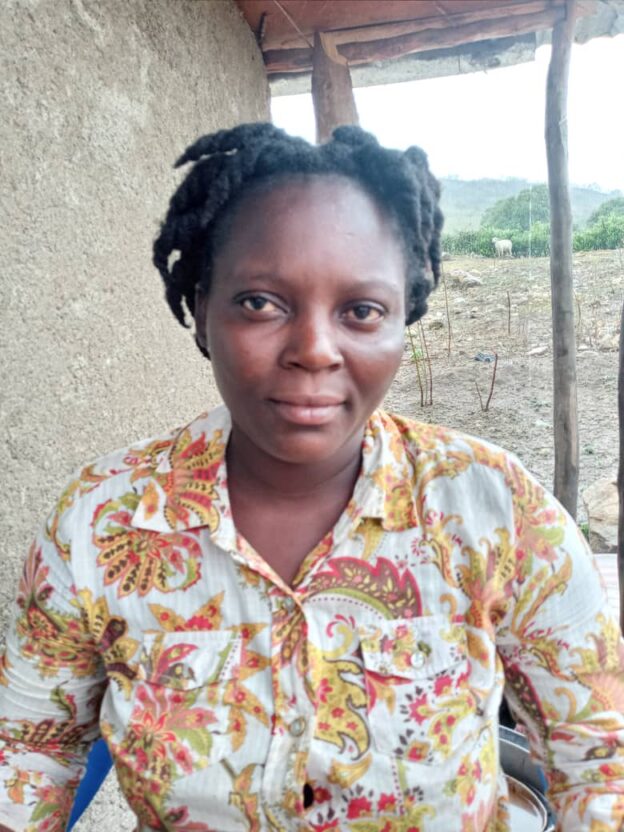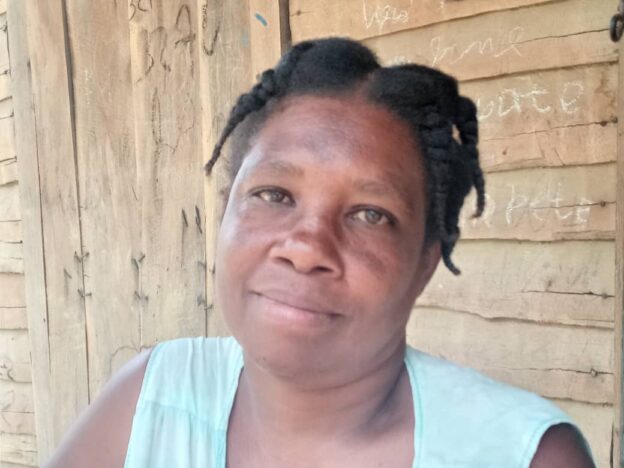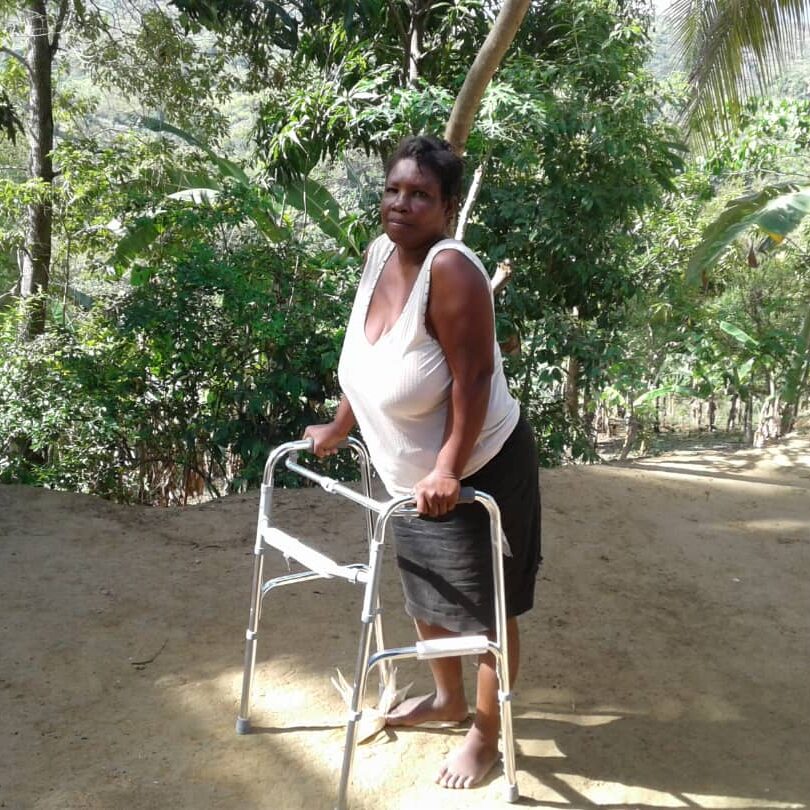Memène and her partner Chiver live in a small house on the side of the hill below the dirt road that leads from the Labasti market into Demare. It’s a farming area along the road south from downtown Mibalè towards Pòtoprens. They share the house with Memène’s daughter Lovemia and two of Chiver’s kids. Though they’ve been partners for years, they have no children together. They are, however, comfortable parenting each other’s children. I have written about the couple before, here and here.
Memène graduated from CLM in December 2014, when both Lovemia and Chiver’s older boy, Chivenaido, were very young. The family made great progress while they were in the program. Memène started earning money through her own small commerce. That small, regular income freed Chiver, who is a much-sought-after agricultural laborer, to focus on larger, better-paid jobs, rather than on the poorly-paid day labor he had to take as long as he needed income every day. They then could use his larger income to accumulate livestock, including cows.
They continued to make progress after graduation. They eventually bought their own land, which enabled them to move out of the shack on Chiver’s father’s land where they had been stuck. Living there had been difficult, both because they had very little space, especially as their kids grew, and because Memène didn’t always get along with Chiver’s sisters. They built a house on their new plot: still small, but larger than the one they had built while in CLM.
But the last few years had been hard. Chiver was sick for a while, then Chivenaido got sick. Much of their savings went to getting Chivenaido healthy again. Last fall, they didn’t have the money to send the kids to school. It was the first time that had happened since before they were in the CLM program. “I can’t say that it’s been as bad as it used to be. We have bad weeks. We might only eat once a day. But we don’t go two weeks that way. The next week we’ll eat two or three times. Chiver works really hard.”
Late last fall they joined a new kind of program. The CLM team has been organizing Village Savings and Loan Associations for all CLM members for several years. VSLAs help communities to organize a way for its members to save money and access small loans. VSLAs have been a popular addition to the CLM program.
But Memène and virtually all CLM graduates in Mibalè were part of the program before VSLAs were added to it. This new program was a return to Mibalè to establish VSLAs for 800 members who had graduated without them. CLM staff organized 32 VSLAs across southern Mibalè, timing them so they will complete their first cycle in time for members to use their savings to pay for their children’s school in the fall of 2021.
Memène is really happy about the new program. “It helps me save money. CLM taught me not to spend everything I have, but this gives me someplace to save. And the money will be ready for me when it’s time to pay for school. I already told Chiver that I am NOT keeping any children at home next year.”
Memène makes contributions to the VSLA in meetings every week, and she has already taken out two loans. “I repaid the first one, and have just one payment left on the second.”
She used the first loan to expand her small business. She sells the various things that Haitian cooks use to prepare meat: bouillon cubes, garlic, baking soda, etc. “I was buying these things in small amounts and reselling them. I couldn’t make any money, because I had to sell for the same prices as the women who buy enough to get better prices. Now I can get those prices, too.”
But her household expenses mean she doesn’t make enough to keep the business going on its own, so she invested the second loan into it as well. She has, however, made enough to reduce how much she needs Chiver to contribute, so the couple can save much of what he brings in, buying additional livestock. They now have four large nanny goats to go with the cow they’ve had for several years.
The new program is faced with challenges. Memène reports that any time CLM staff isn’t at their meeting, things are a little chaotic. And that’s not what the CLM team is hoping for. CLM cannot accompany the VSLAs forever, their members need to be ready to take them over themselves. In the next few months, the team will need to provide additional training to the leaders of the VSLAs, and those sessions are already planned for July.
